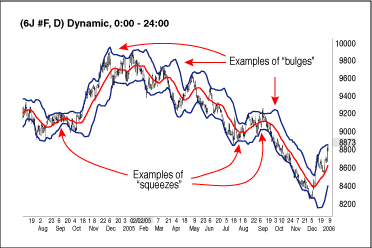I've Got A Yen To Trade
Volatility, Bollinger Bands, And The Yen
by Matt Blackman
Combine volatility with your favorite trading signal, and your trade will become a whole lot easier. Here's an example using the yen.
Traders are taught from the beginning that acting on a single signal to generate a trade is risky, regardless of the asset class or time frame: Which signal will you use to do so?
Not only that, relying on different indicators that use the same datapoints may seem sufficient to the uninitiated, but that provides a false sense of security. Relying on two indicators that use the same permutations of high, low, open, and close for confirmation is like expecting a three-dimensional image by looking at two television screens at once. All you get is the same image in duplicate.
"Using indicators that are not correlated or, at best, have a very low correlation with one another is a far more effective approach for giving traders more confidence in signals that agree," points out Darrell Jobman, editor in chief at www.TradingEducation.com. "These kinds of signals are truly two dimensional because they rely on different data."
VOLATILITY OF THE THIRD KIND
Price is obviously the base for indicators used by most traders, but one noncorrelated data source is volatility, one of the least-understood concepts for traders. Volatility has one characteristic that makes it more predictable: Unlike price, which does not have a set rhythm, volatility is highly cyclical. Like the calm before a storm, periods of low volatility are inevitably followed by a volatility expansion and a price breakout. For most traders, the difficulty lies in knowing which direction this will occur.
The options trader relies heavily on the concept of volatility. In fact, John Bollinger, creator of his namesake bands that describe and track price volatility, was originally an options trader. Bollinger Bands contain price action by a set number (usually two) of standard deviations from a simple moving average that help the trader determine when volatility has reached extremes.

FIGURE 1: BOLLINGER BANDS PROVIDE A PICTURE OF VOLATILITY. When Bollinger Bands narrow or "squeeze," note the breakout action that often follows. When they widen or "bulge," note how market action consolidates after the high-volatility period.
Excerpted from an article originally published in the April 2006 issue of Technical Analysis of STOCKS & COMMODITIES magazine. All rights reserved. © Copyright 2006, Technical Analysis, Inc.
Return to April 2006 Contents